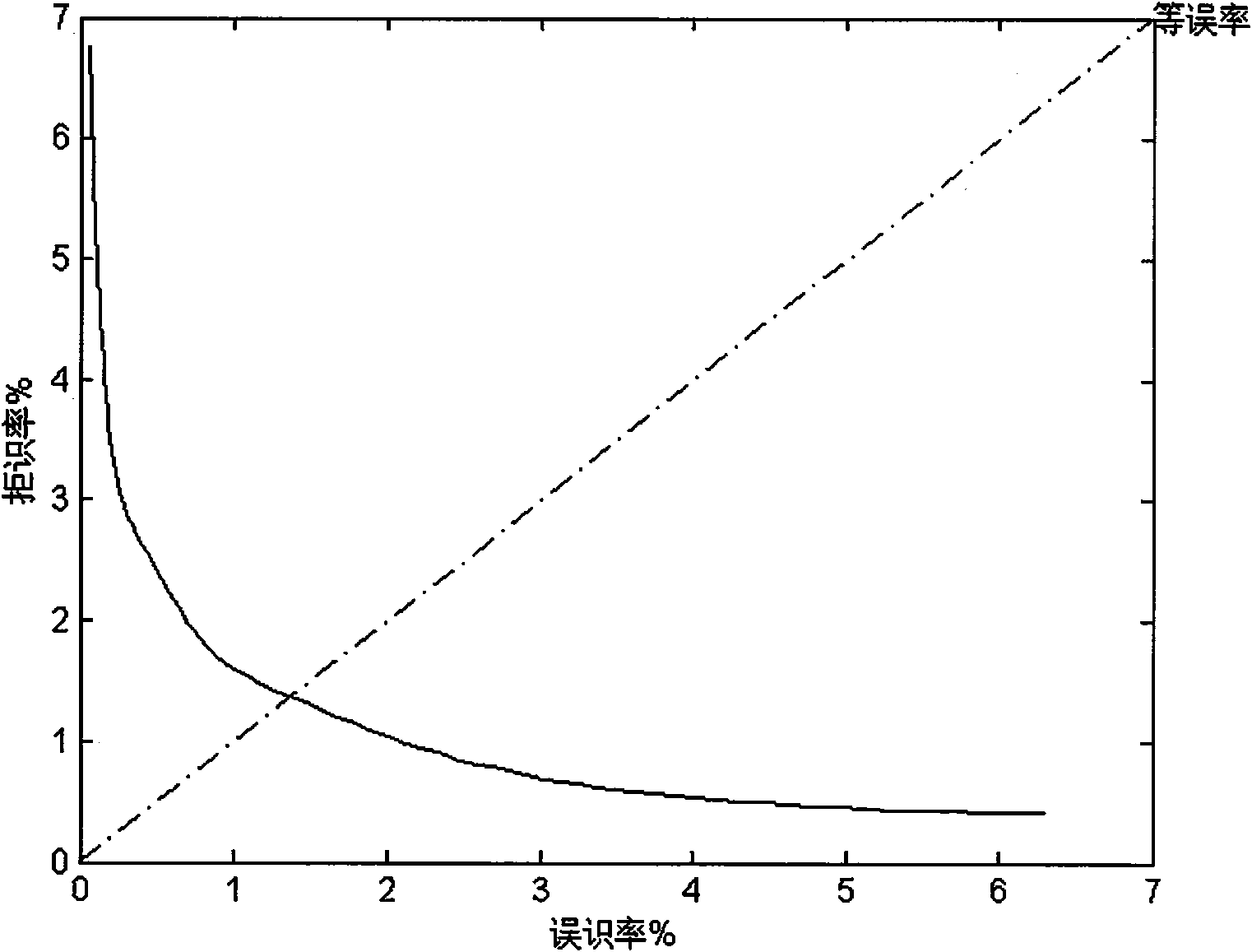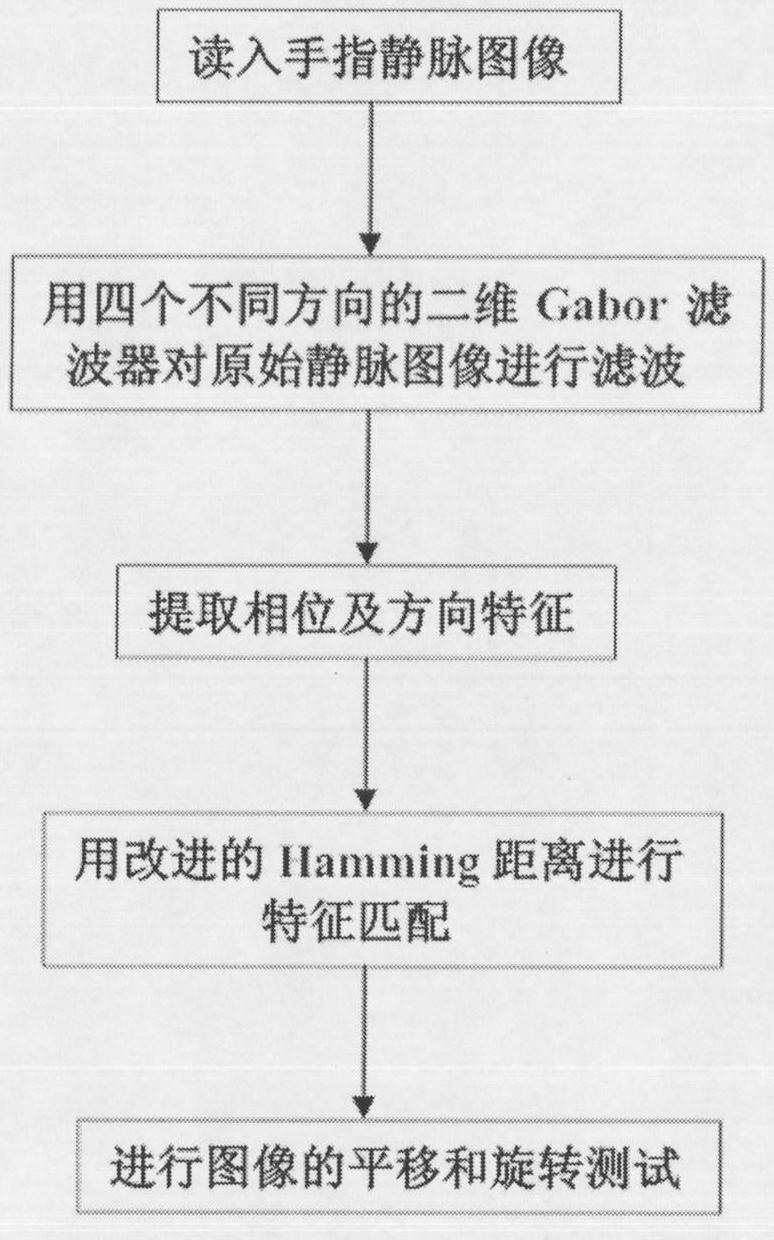Finger vein identification method for extracting phase-position and direction features
A finger vein and recognition method technology, applied in the field of finger vein feature extraction, can solve problems such as slow recognition speed, large finger position changes, and increased training samples, and achieve strong practicability, reliable recognition results, and overcome finger deformation.
- Summary
- Abstract
- Description
- Claims
- Application Information
AI Technical Summary
Problems solved by technology
Method used
Image
Examples
Embodiment Construction
[0032] The present invention is described in more detail below in conjunction with accompanying drawing example:
[0033] 1. Extract the phase and direction features of finger veins
[0034] Since the texture of the finger vein image is composed of multiple lines and has obvious and stable directionality, it can be regarded as a texture image. Two-dimensional Gabor filter belongs to two-dimensional continuous wavelet transform, which is widely used to extract texture features of images. Aiming at the characteristics of the vein pattern, the present invention first uses a two-dimensional Gabor filter to filter the original vein image to extract phase and direction features.
[0035] 1.1 Two-dimensional Gabor filter
[0036] Definition of two-dimensional Gabor filter [5] as follows:
[0037] G ( x , y , θ , μ , σ ) = ...
PUM
 Login to View More
Login to View More Abstract
Description
Claims
Application Information
 Login to View More
Login to View More - R&D
- Intellectual Property
- Life Sciences
- Materials
- Tech Scout
- Unparalleled Data Quality
- Higher Quality Content
- 60% Fewer Hallucinations
Browse by: Latest US Patents, China's latest patents, Technical Efficacy Thesaurus, Application Domain, Technology Topic, Popular Technical Reports.
© 2025 PatSnap. All rights reserved.Legal|Privacy policy|Modern Slavery Act Transparency Statement|Sitemap|About US| Contact US: help@patsnap.com



